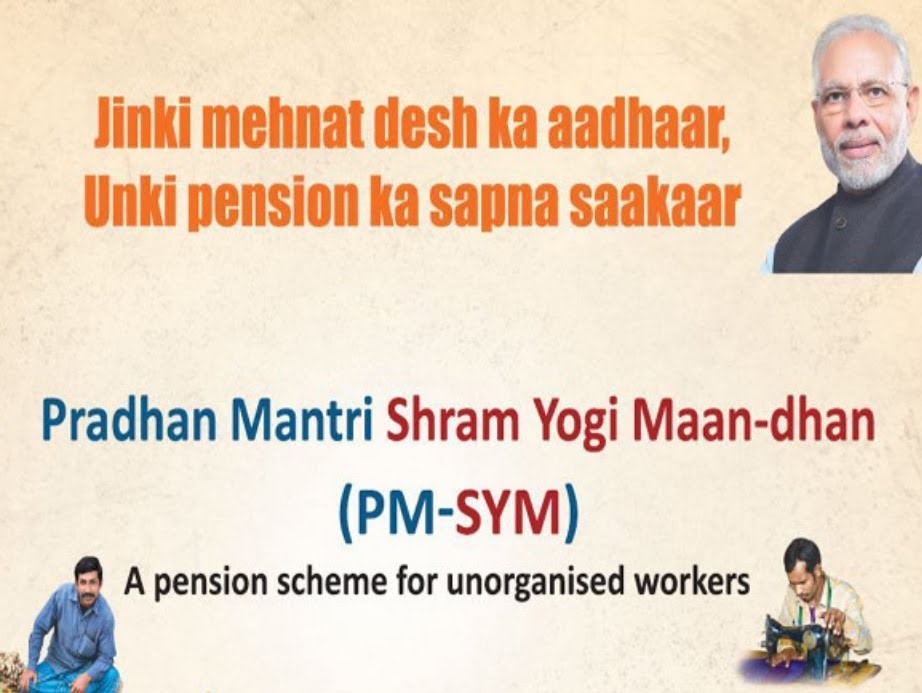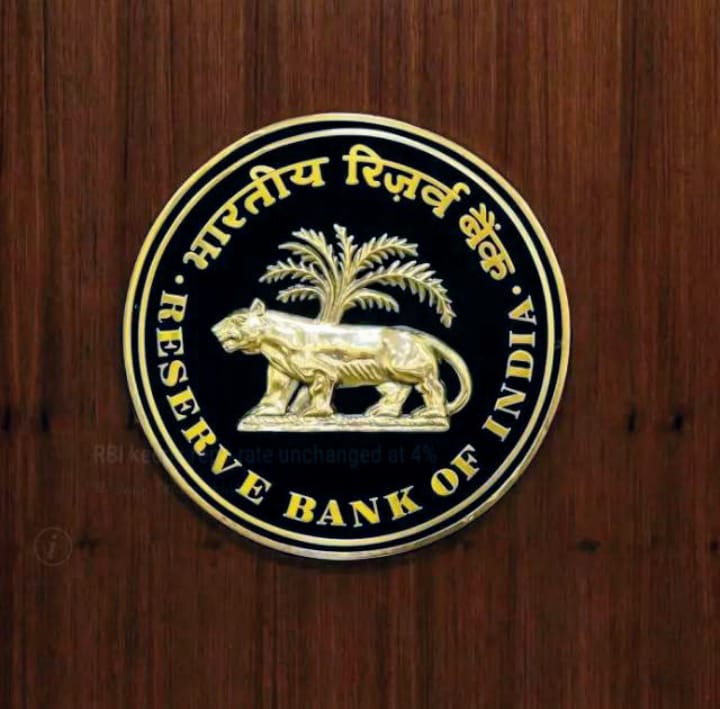National Pension System (NPS) is a pension scheme introduced by Government of India to provide social security to citizens of India and thus gives an opportunity to invest and accumulate savings. On maturity, the subscriber of the scheme gets a lump sum amount along with regular income for a stress-free retirement. The Pension Fund Regulatory and Development Authority (PFRDA) is established by the Government of India to develop and regulate pension sector in India. The basic aim of NPS is to institute pension reforms and to inculcate the habit of saving for retirement amongst the citizens of India. The subscriber of the NPS scheme will be allotted with a unique Permanent Retirement Account Number (PRAN). The PRAN will remain same for the rest of the subscriber’s life. The subscriber can use this unique PRAN from any location in India.

The subscriber of the NPS scheme will get an access to two personal accounts with a single unique PRAN. Those accounts are:
- Tier I Account: This is a non-withdrawable account where the applicant contributes his/her savings for retirement purpose. The subscriber can claim tax benefits against the contributions made by him/her.
- Tier II Account: This is a voluntary savings facility. The subscriber can withdraw savings from this account whenever he/she wishes to do so. The subscriber cannot claim any kind of tax benefit against the contributions on this account. However, subscribers can only make investments to the Tier I account if he/she has an active Tier II account.
Following are the people who can join and get benefitted with the NPS scheme:
- Central and State Government Employees: NPS is applicable to all Government employees both central and state, except for those employed with the Armed Forces. Any other Government employee who is not mandatorily covered the NPS can also subscribe to NPS under “All Citizen Model” through a Point of Presence-Service Provider.
- Corporate: Under the Corporate model, corporate decide investment choice either at subscriber level or at the corporate level centrally for all its underlying subscribers. The corporate or the subscriber also have an option to choose the pension fund manager and the percentage in which the funds are allocated in various asset classes.
- All Citizen Model: All citizens of India aged between 18 to 60 years as on the date of submission of his/her application to Point of Presence (POP)/ Point of Presence- Service provider (POP-SP) can enroll and contribute to NPS scheme. The subscriber should fulfill the KYC requirements and submit all necessary documents.
NPS account has the following benefits:
- NPS is regulated by PFRDA (Pension Fund Regulatory and Development Authority) with transparent investment norms.
- NPS is transparent and cost effective system wherein the NPS account can be accessed online to make contributions and track investments.
- It is simple for the subscribers to open an NPS account. All the subscriber has to do, is to open an account with his/her nodal office and get a Permanent Retirement Account Number (PRAN).
- Each subscriber has a separate unique PRAN, which is portable. The PRAN will remain same even if the subscriber gets transferred to any other location.
- Investments in the NPS scheme attract tax benefits.
Pradhan Mantri Shram Yogi Maan-Dhan is a pension scheme introduced by the Government of India to ensure old age protection and social security for unorganized workers. The unorganized workers are mostly engaged as rickshaw pullers, home based workers, street vendors, mid-day meal workers, head loaders, brick kiln workers, cobblers, rag pickers, domestic workers, washer men, agricultural workers, construction workers, handloom workers, leather workers, audio-visual workers or in similar other occupations.

Eligibility Criteria for PM-SYM:
- The subscriber of the scheme should be an unorganized worker.
- The entry age for the subscriber should be between 18 to 40 years.
- The subscriber’s monthly income should not be more than Rs.15000.
- The subscriber should not be an income tax payer.
- The subscriber should possess Aadhar Card.
- The subscriber should also possess Savings Bank account/ Jan Dhan account number with IFSC.
Features of PM-SYM:
- The subscriber under the PM-SYM scheme would receive a minimum assured pension of Rs.3000/- per month after attaining the age of 60 years.
- If the subscriber dies during the receipt of the pension, the spouse of the subscriber shall be entitled to receive 50% of the pension as family pension. Family pension is applicable only to spouse.
- If the subscriber has given regular contributions to the scheme and died due to any cause before the age of 60 years, his/her spouse will be entitled to join and continue the scheme subsequently by payment of regular contribution or exit the scheme as per provisions of exit and withdrawal.
- The subscriber made the contributions through auto-debit facility from his/her savings bank account/ Jan Dhan account.
- This is a voluntary and contributory pension scheme where prescribed age-specific contribution shall be made by the beneficiary and the Central Government will also give equal matching contribution in his pension account.
- The enrollment for PM-SYM will be carried out by all the Common Services Centres (CSC). The eligible subscriber may visit the nearest CSC along with their Aadhar Card and Savings Bank account passbook/ Jan Dhan account and get themselves registered for the scheme. The subscriber’s first month contribution shall be paid in cash and he/ she will be provided with a receipt.
- All the branch offices of LIC, the offices of ESIC/EPFO and all labour offices of Central and State Governments will facilitate the unorganized workers about the scheme.
- In case the beneficiary exits the scheme within a period of less than 10 years, the beneficiary will only be returned with his/ her share of contribution with savings bank interest rate.
- In case the beneficiary exits after a period of 10 years or more but before superannuation age i.e. 60 years of age, the beneficiary will be returned with his/ her share of contribution along with accumulated interest as actually earned by fund or at the savings bank interest rate whichever is higher.
- If the beneficiary has defaulted in paying the contribution on monthly basis, he/ she will be allowed to regularize his contribution by paying entire outstanding dues, along with penalty charges, if any, decided by the Government.
Atal Pension Yojana, a pension scheme introduced by the Government of India in the year 2015-16 with the objective of financially encourage the workers of the unorganized sector. This scheme is regulated by the Pension Funds Regulatory Authority of India (PFRDA). It is an extension of the recognized NPS (National Pension Scheme) and replaces previous Government’s Swavalamban Pension Yojana which was not well accepted by the mass.

Eligibility
If an individual wants to invest in APY, he/she must satisfy the following requirements:
- Must be citizen of India.
- Must have a savings bank account.
- Should be in the age group of 18 to 40.
Features
The important features of APY are mentioned below:
- Monthly contribution and mode of payment: Monthly contribution of APY depends on the chosen final corpus amount and the preferred monthly pension by the subscriber along with his/her age at the time of subscribing for the scheme. The subscriber is required to opt for a monthly pension from Rs.1000 to Rs.5000 which he/she will receive at the age of 60 years, depending on their contributions, which itself will be based on the age of joining the APY. The contribution levels will vary and will be low if subscriber joins early and increase if he joins late.
- Automatic Debit: Under the APY scheme the beneficiary’s bank account is linked with his/her pension account and the monthly contribution get automatically debited from the beneficiary’s account. In this case, the beneficiary must keep required balance in their savings account on the stipulated due date to avoid late payment penalty.
- Withdrawal Policies: Upon completion of 60 years, the beneficiary will submit the request to the associated bank for drawing the monthly pension amount. Subscriber’s existence from the scheme before attaining the age of 60 is not permitted, however, it is permitted only in some exceptional cases, i.e., in the event of death of the subscriber or terminal illness. In the case of beneficiary’s death before reaching the age of 60 then his/her spouse shall be entitled to receive the pension amount. However, the spouse has the option either to exit the scheme with the corpus amount or continue to receive the pension amount on monthly basis.
- Penalty for Default in Payment: If the subscriber delays in payment of monthly contribution, he/she will be liable for penalty. The charges for penalty are shown below:
- Rs.1 per month for contribution up to Rs.100 per month.
- Rs.2 per month for contribution up to Rs.101 to Rs.500 per month.
- Rs.5 per month for contribution between Rs.501 to Rs.1000 per month.
- Rs.10 per month for contribution beyond Rs.1001 per month.
Beneficiary’s discontinuance in the payment of contribution shall lead to the following:
- After 6 months account will be frozen.
- After 12 months account will be deactivated.
- After 24 months account will be closed.
- Tax Exemptions: Contributions towards the APY is available for tax exemption under section 80CCD of the Income Tax Act, 1961.
- Nominee Facility: Under APY, nomination facility is available. In case of the death of the beneficiary, the spouse of the deceased will be benefitted with the scheme. In the event of death of both the beneficiary and his/her spouse, the nominee shall be entitled to receive the entire corpus amount.
Several rules are coming into effect in India from October 1, 2020. Amongst these are rules for health insurance, rules for drivers, debit and credit card rules, rules related to LPG cylinder, etc. As all these are significant and related to our day to day life, hence it is important for us to know about the rules that are going to change.

- Changes related to Health Insurance: As per the new rules of health insurance, the inclusion of covid-19 will keep 17 permanent illnesses outside the cover. The prices for the premium cover will therefore rise.
- Drivers need not to keep physical copies of Driving License and RC while driving: The Ministry of Road Transport and Highways has removed the need for hard copies in one of their amended notifications. Drivers need to keep only a valid soft copy of Driving License and Registration Certificate attached to their vehicle. In this era of digitization, Government has introduced an information technology portal to maintain digitally certificates and e-challans. Drivers can also maintain their vehicular documents online in portals like DigiLocker or mParivahan.
- Rules regarding Debit and Credit cards: In order to secure from misusing of Debit and Credit cards the Reserve Bank of India has issued guidelines, where cardholders has the option of opting in or opting out of services, spend limits, etc for international transactions, online transactions and contactless card transactions.
- Rules of LPG cylinder: Due to the prevailing situation of Covid-19, the Union Cabinet had extended the time limit to avail free cooking gas cylinders under Pradhan Mantri Ujjwala Yojana (PMUY). The time limit for free connection of cooking gas cylinder ended on September 30. Therefore, there will be no free LPG cylinder under PMUY from October, 1.
- Foreign Fund Transfer will attract 5% tax: Any amount spent on Foreign tour packages will attract 5% of tax-collected-at source unless tax is already deducted at source on that amount and apart from foreign tour packages every other foreign remittances made above Rs.7 lakhs will attract the same percentage TCS.
- New Rules for Sweet Sellers: The Food Safety and Standards Authority of India (FSSAI) has directed the sweet shop owners to implement the protocol of ‘best before date’ on non-packaged and loose sweets available for customers from October 1.
- Television sets on a higher side: Buying televisionwillnow be costlier as Open cell panels will attract 5% import duty from October 1. The Government is targeting to increase domestic production capacity for open cell panels keeping in mind the ‘Atmanirbhar Bharat’ initiative, so that imports can be curbed.
- Mustard Oil not to be blended with any other cooking oil: For providing the consumers with quality products,The Food Safety and Standards Authority of India (FSSAI) has banned blending of Mustard oil with any other edible oil in India from October 1.
A credit card is an important financial instrument which is issued by the banks to customers. Customers are the beneficiary users of the card. A credit card can be used to purchase, make online transactions, book air tickets and many more other benefits can be accessed. Banks issue credit cards to customers with a line of credit to avail the benefits and the cardholder must pay the amount before the due date. There are different types of credit cards issued by the bank and it is up to the consumers to decide which one he needs. There are a lot of things that a consumer should keep in his mind while applying for a credit card.

Following are the things you should know before applying for a credit card:
1. The bank will want to know your income information to see if you can pay back the dues of your credit card bills. Your income plays a vital role in this case. The more you earn the more choices you have regarding the availability of card.
2. When a customer is issued with a credit card by the bank, his/her credit limit is initially lower. The bank will check your paying capacity, if your paying capacity impresses the bank then they might increase your credit limit.
3. You must know the interest rate bank is charging from you in case you default to pay the credit card bills on its due date.
4. A credit card holder should be aware of all the charges related to the card. The charges a credit card may hold could be annual maintenance charge, joining fee, cash advance fee, over-limit fee, late payment charges, foreign transaction fees, GST.
5. A credit card holder has the opportunity to make a good credit score by managing and paying the debts on time. A consumer’s credit score is largely affected by non-payment of dues and an unbalanced income source.
6. Credit cards may provide you with a lot of rewards and benefits. Card holders must know how the rewards work and also how to avail the benefits offered. The rewards and benefits can be of welcome gifts, cash back benefits, travel benefits, air-port lounge access, insurance coverage, etc.
Pradhan Mantri Jeevan Jyoti Bima Yojana (PMJJBY) is an insurance scheme backed by Government of India offering life insurance cover for death due to any reason. It is a one year cover, renewable from year to year. This policy is administered through LIC and other life insurance companies willing to offer the product on similar terms with necessary approvals and tie ups with banks for this purpose.

Features of PMJJBY:
- All individual savings account holders of participating banks between the age group of 18 to 50 years who give their consent will be entitle to join.
- In case a person has multiple accounts in one or different banks, he will only be able to join the scheme through one bank account.
- Aadhar will be the primary KYC for the bank account.
- The cover period is 1st June of each year to 31st May of subsequent year. Subscribers are required to enroll and give their auto-debit consent by 31st May of every year.
- In case of death of the member who is insured, the nominee will be paid a fixed amount of Rs.2 Lakh.
- As per the earlier guidelines by the Ministry of Finance, the annual premium was at constant for Rs.330 for a period of 1 year starting from 1st June to 31st May irrespective of the request date of the customer into the scheme.
- With effect from 1st September 2018, the Ministry of Finance revised the premium payment structure on a quarterly basis depending upon the request date of subscribers into the scheme. The revised premium amount under the scheme is as follows:
| Enrollment Month | Premiums |
| June, July, August | Rs.330 |
| September, October, November | Rs.258 |
| December, January, February | Rs.172 |
| March, April, May | Rs.86 |
Termination of Assurance: The assurance on the life of the policyholder shall terminate on any of the following events and no benefit will become payable thereunder:
- On attaining the age of 55 years subject to annual renewal up to that date.
- Closure of account with the bank or insufficiency of balance to keep the insurance in force.
- In case of trying to join the scheme with multiple insurance companies and/or with multiple bank accounts, the cover will be restricted to Rs.2 Lakhs and other insurance covers are terminated and premium shall be forfeited.
Following steps should be taken by the nominee or the family member of the insured, in case of death of the policyholder to claim the insured amount of Rs.2 lakhs:
- Nominee should approach the bank wherein the member was covered along with the death certificate.
- Nominee to collect Claim form and Discharge receipt from the bank.
- Nominee should complete the Claim form and Discharge receipt.
- Nominee should submit Claim form and Discharge receipt along with death certificate to the bank and photocopy of the cancelled cheque of the nominee’s bank account.
The most secured place to keep your hard earned money is a bank account. Bank accounts help us to manage our personal finances. We can keep a record of our spending habits through bank account statements which helps us to check on our spending habits and builds a habit of saving and investing. In some cases it is mandatory to open a bank account. A salaried employee may most probably be asked to open a bank account so that his/ her salary can be credited to. In case you need to receive subsidies from the Government you must open a bank account. In addition to that personal savings bank account often offers interest on our savings which of course is our free income so why not keep our money in a bank account. Now-a-days banking industry is competitive and are improvising and providing more and more services to people. People now-a-days are more comfortable in digital transactions. Therefore, most of the banks have their own official apps to benefit customers so that customers can easily perform basic banking transactions rather than physically visiting the bank. Some people may find it difficult to choose exactly what type of bank account he/she wants or which suits his needs. Hence, it is important to know the type of bank accounts exists in our country and their features so that one can choose it according to his/her needs. Few of them are discussed below:

Current Account: Though Current bank accounts can be opened by individuals but are most popular among companies, firms, public enterprises, businessmen who generally deal with large number of banking transactions. Current account can be opened in most of the commercial banks. The deposits in a current account are the most liquid deposits being always in the flow and operational also. There is no limit on the number of transactions in current accounts. A customer can deposit and withdraw his/her money any number of time in a day. Generally banks do not offer interest on current accounts. On the other hand, bank charges some service charges on such accounts. Overdraft facility is available with a current account but generally it comes with a fee.
Savings Account: This is the most common and widely preferred deposit bank account by the customers. A savings bank account stores your money safely while earing you interest. Some banks may offer you to open a zero balance savings account which is also called as no frills account. There is a limit on the number of transactions that can be made by customers having a savings bank account.
Fixed Deposit Account: These are popularly known as FD accounts. One can deposit the surplus amount of money he has into the FD account which he/ she doesn’t need for emergencies. The tenure of period of FDs can vary from 7 days to 10 years. The interest rate on FDs varies from bank to bank. Banks also provide loans against the money in your FD. If the customer withdraws the money from the FD account before the maturity period then he/she has to pay a penalty which varies from bank to bank.
Recurring Deposit Account: Recurring Deposit account comes with the flexibility to save a fixed amount of money of customer’s choice for a fixed period. These accounts are popularly known as RD accounts. The tenure of period in this type of account varies from 6 months to 10 years. The interest rate provided by the banks on RDs differ from bank to bank. A customer can get loans against his/her RD account. A minor above 10 years of age as well a major individual can open a RD account. RDs can be opened in single and joint names, nomination is also available. Premature withdrawal of accumulated amount is permitted, however penalty is imposed for amount withdrawal before maturity.
Certificate of Deposit: A Certificate of Deposit (CD) is an agreement between the bank and the investor against the funds deposited by the investor in a dematerialized form for a specific period of time. Premature withdrawal of CD can attract a higher amount of penalty. Not all banks or commercial institutions are allowed to issue CD. The maturity period of CDs issued by banks ranging from 7 days to one year, whereas for financial institutions it ranges from 1 year to 3 years. Banks/ financial institutions do not grant loan against CDs. Additionally, they cannot buy-back their own CDs before maturity period.
DEMAT Account: A DEMAT account (short for Dematerialized account) is an account which hold shares and securities electronically. In India, DEMAT account service is provided by depositaries such as National Securities Depository Limited (NSDL) and Central Depository Services Limited (CDSL) through a depository participant such as a bank. A depository participant acts as an intermediary between the investor and a depository. A DEMAT account is mandatory for the share market transactions. It eliminates theft, forgery, loss and damage of physical certificates.
NRI Account: An NRI account is a bank account opened by a Non-Resident Indian (NRI) or a Person of Indian Origin (PIO) with a bank or financial institution existing in India to meet his/her banking and investment needs. These accounts provide various facilities including currency denomination, transferability of the amount, tax, etc.
The ATM card cum Debit card which we generally call as ATM card or Debit card is the biggest savior in today’s world. ATM cum Debit cards are issued by banks to let the customers withdraw money and transfer funds from their accounts as well as perform cashless transactions. Now a days, most of the payments we made is done through a debit card. Debit cards eliminate the need to carry cash or physical cheques to make purchases. Debit card gives you the freedom to withdraw money from ATMs, make day to day purchases at Merchant locations like Jewelry Stores, Apparel Stores, Petrol Pumps, Restaurants, on various mobile wallets, E-commerce websites for shopping, booking air/rail/movie tickets & utility bill payments online. The money is immediately transferred from the cardholder’s bank account when making any transactions. Hence, it behaves like a boon in this generation and you can’t ignore it.
Process of using ATM cum Debit card at ATMs:
- Insert your card in the slot provided.
- Select the language (if language selection option is available).
- Enter your PIN.
- Select your transaction. You have the option of carrying out financial and non-financial transaction.
- In case of cash withdrawal, enter the amount that you wish to withdraw. On approval, you’ll receive your cash and will be able to view the balance on the transaction slip.
Please Note: Some ATMs may request you to select the account type, i.e., Saving or Current.

In order to avoid financial fraud, we must keep in mind the following safety measures while using the ATM cum Debit card:
- Keep your card in safe custody. Do not hand it over to anyone or leave it unattended.
- Keep your card details confidential. Card details include 16 digit card number, card valid thru (expiry) date, 3 digits Card Verification Value (CVV) printed on the back of the card, ATM PIN & OTP.
- Do not respond to Phone calls, E-mails, SMSs etc. requesting you to provide confidential details of your card for any reason.
- Memorize PIN instead of writing it down. Do change them periodically.
- Do not handover your card and/or provide ATM PIN details to ATM guards or anybody, while transacting at any ATM.
- Keep your mobile number and E-mail ID address updated with Bank to get transaction alerts account statement or any other communication from Bank if you receive any transaction alert through SMS/ E-mail or observe any debit entry in your account statement which is not executed by you, immediately call customer care for detail and/or to hotlist/cancel your card or internet banking.
- Immediately call customer care to hotlist/ cancel your card, in case it is lost or stolen or is captured by any other bank ATM.
By the term banking we usually understand as the business activity of accepting for the purpose of lending or investment of deposits owned by other individuals and activities. But, banking these days include a whole lot of services and products which we are not aware of. Since banking plays a very important role in our business and personal life; therefore, it is essential for consumers to learn some of the common banking terms so that they can secure and manage their account way better. Today, in this article we are going to discuss about some of the most commonly used banking terms, banking products and services.

- ATM (Automated Teller Machine): An automated teller machine is an electronic banking outlet which dispense cash, receive cash, cheque deposits, bill payments and generate mini statements.
- Bank Account: A bank account is an arrangement by a bank in which customers can deposit money or its equivalent and subject to withdrawal of money. Bank accounts can be of different types. You can open an account with the bank based on your needs.
- Bank Rate: Bank rate is the rate of interest charged by the central bank i.e., the Reserve Bank of India for lending funds to commercial banks. At present the bank rate of RBI is 4.65%.
- Call Money: When money is lent for a day, it is called call money.
- Notice Money: When money is lent for more than a day to fourteen days it is called as notice money.
- Cheque: A cheque is an unconditional order addressed to a banker, signed by the person who has deposited money with a banker, requesting him to pay on demand a certain sum of money only to the order of the certain person or to the bearer of the instrument.
- CRR (Cash Reserve Ratio): Cash reserve ratio is a certain percentage of the total bank deposits that RBI has mandated all the commercial banks to maintain as reserves with the RBI.
- SLR (Statutory Liquid Ratio): Statutory liquidity ratio is the minimum percentage of deposits that commercial banks are required to maintain in the form of cash, gold reserves, PSU Bonds and Reserve.
- Repo Rate: Repo rate is the rate at which banks borrow money from RBI. The current repo rate in India is 4%.
- Reserve Repo Rate: Reserve repo rate is the rate of interest at which RBI borrows money from commercial banks.
- Debit cum ATM Card: Issued by banks to let the customers withdraw money and transfer funds from their accounts as well as perform cashless transactions. The payment is made online or by swiping the card in the machines at point of sales.
- Dishonour of Cheque: When on presenting a cheque if the bank refuses to pay the amount mentioned on the cheque to the payee due to certain reasons then it is said to be a dishonoured cheque.
- E- Banking: E- banking also known as electronic banking, online banking, internet banking or virtual banking. When financial or non-financial transactions transactions are held online via internet, then it is called as e-banking.
- Moratorium period: Moratorium period is that time period during when the loan term borrower is not required to make any repayment.
- Non-Performing Assets (NPA): Non-performing assets are those loans and advances for which the principal and interest payments remained overdue for the period of 90 days or more.
- Retail Banking: Retail banking helps the Indian banking sector by providing a whole lot of services directly to retail consumers rather than corporations and other banks. Retail banking is also known as consumer banking or personal banking.
- Wholesale Banking: Wholesale banking services provides complete banking solutions to corporates, mid-size companies, and institutional clients from private and public sector and services offered to other banks.
- Scheduled Bank: Scheduled banks are those banks which are included in the Second Schedule of RBI Act, 1934.
- Cash Credit: A Cash credit loan is a short term cash loan given to a company to meet its working capital requirements.
- Letter of Credit: A letter of credit is a written obligation of the bank that guarantees the buyer’s payment to the sellers.
- Bancassurance: Bancassurance is the concept of selling insurance products of insurance companies by banks. Banks earn revenue through this sale.
- DEMAT Account: A Demat account is an account to hold shares and securities in electronic form. The full form of demat account is dematerialized account.
- Insolvency: Insolvency is a state of being unable to meet the financial obligations in a timely way. Those who are in a state of insolvency are called insolvent. They can be a person or an entity.
- Bankruptcy: Bankruptcy is a legal declaration for people or businesses that are unable to repay their outstanding debts.
- MSME: MSME stands for micro, small and medium enterprises. A micro enterprise, where the investment does not exceed one crore rupees and turnover does not exceed five crore rupees; a small enterprise, where the investment does not exceed ten crore rupees and turnover does not exceed fifty crore rupees; a medium enterprise, where the investment does not exceed fufty crore rupees and turnover does not exceed two hundred and fifty crore rupees.
- Small Finance Bank: Small finance bank is a specific segment of banking created by RBI to provide basic banking activities to unserved and underserved sections.
- FDI: Foreign direct investment is when an individual or a company who or which is non-indian invests in Indian companies.
- Credit Rating: Credit rating is the assessment of the ability of the borrower to pay back the loan along with interest.
- NEFT (National Electronic Fund Transfer): NEFT is an electronic fund transfer system from any bank branch to any individual having an account with any other bank branch in the country participating in the scheme.
- RTGS (Real Time Gross Settlement): RTGS can be defined as continuous (real-time) settlement of funds individually on an order by order basis. Real- time means the processing of instructions at the time they are received rather than at some later time. The RTGS system is basically meant for large-value transactions. The minimum amount to be transferred through RTGS is two lakhs rupees.
- IMPS (Immediate Payment Services): IMPS is an instant inter-bank fund transfer system. IT offers an electronic fund transfer service through mobile phones. Unlike, RTGS the service is available 24×7 throughout the year including bank holidays.
- Base Rate: Base rate is the minimum rate set by the Reserve Bank of India below which banks are not allowed to lend to its customers.
- Collateral: Collateral is an asset or a property that a lender accepts as security for extending a loan. A collateral can be in the form of land, gold etc.
- MICR Code: An MICR code is a 9-digit code that uniquely identifies the bank and branch participating in an Electronic Clearing System (ECS). This code varies from bank to bank and is an acronym for Magnetic Ink Character Recognition Technology.
- No-frills Account: This is a savings bank deposit account which offers certain minimum facilities, free of charge, to the holders of such account.
- KYC: KYC or Know Your Customer is a mandatory procedure that all banks undergo in order to establish the correct identity of the customer. This is to ensure that no fraudulent operations are taking place in the bank.
- Joint Account: A joint account is a bank account shared by two or more individuals having equal rights and liabilities.
For the long-term development of a country, be it economically or socially, women of that country should be empowered. No country can attain its full potential without adequately investing in the capabilities of women. Women entrepreneurship can be an effective strategy to solve the problems of rural and urban poverty. A women entrepreneur is therefore a person who takes risk and is confident , creative and innovative about her work ability, who aspires to be economically independent and simultaneously creates employment opportunities for others. Women entrepreneurs are slowly making their mark as business women and have achieved remarkable success. However, they are still very less in number as compared to their male counterparts.

Now, this is the time for women to take part in the mainstream economic development of a country. But, they faces a lot of problems while stepping into the world of entrepreneurship. The major roadblocks on their entrepreneurial journey is lack of financial capital, gender inequality, lack of social support from their own families and a lot more. Now, the question arises how is this possible to create an entrepreneurial space for women to grow in the field of business? This can be simply done by following the given below suggestions:
- Building the capacity of service providers that promote women entrepreneurship development.
- Removing the specific gender barriers that they may face.
- Offering better access to finance.
- Providing better educational facilities for women.
- Conducting adequate training program.
- Arranging relevant technological assistance.
- Counseling through the aid of committed NGOs.
To facilitate the growth of women entrepreneurship, various schemes introduced by financial institutions in India including nationalized banks that all women entrepreneurs need to aware of.
Popular schemes offered exclusively for women to promote women entrepreneurship:
1. Cent Kalyani: This Scheme is offered by the Central Bank of India with the aim of encouraging women to start a new business or expand or modernize the existing unit.
2. Stree Shakti: This scheme is run by the State Bank of India to strengthen the process of economic development of rural women and make them self-reliant.
3. Mahila Udyam Nidhi: This scheme is offered by Punjab National Bank and Small Industrial Development Bank of India to meet the gap in equity.
4. Dena Shakti: Dena Shakti is a SME loan specially designed for women entrepreneurs to facilitate them to establish and run their own business. This Scheme is offered by Dena Bank, now merged with Bank of Baroda.
5. Bharatiya Mahila Bank Business Loan: Bharatiya Mahila Bank is now a part of State Bank of India. The BMB provides business loans to women entrepreneurs and provides a level playing platform for them.
6. Udyogini Scheme: This scheme is implemented by Women Development Corporation under Government of India. This scheme aims to provide subsidized loans to women entrepreneurs from rural and underdeveloped areas.





